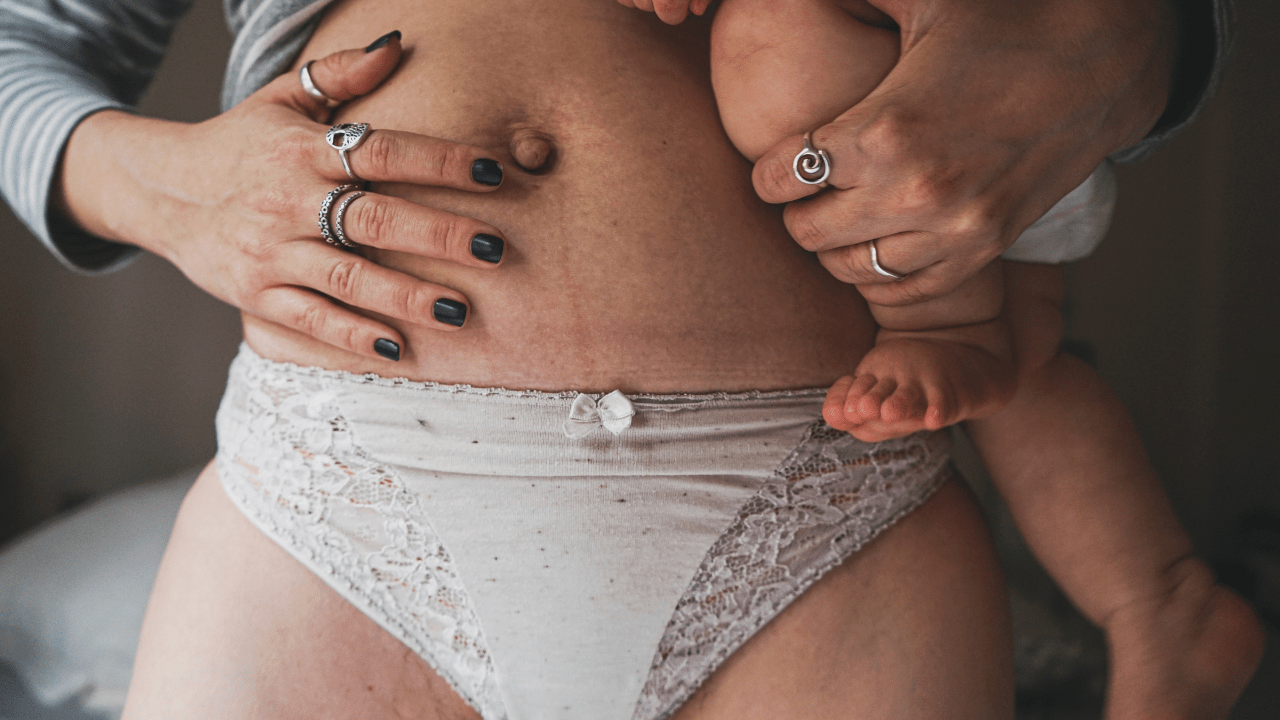Looking after your tear or episiotomy after the birth of your baby, the thought of tearing or having an episiotomy in childbirth can be worrisome. Yet there are measures you can take to help produce the chances of this happening.
If you sustain a tear or an episiotomy, knowing how to look after your body will help your healing and recovery process. So what can you do? Did you know that a PT can actually help? Specifically seeing a pelvic floor physical therapist? A pelvic floor PT can help you create an individualized treatment program to help you improve recovery.

Here’s my tips for optimal recovery:
Tip Number 1: Keep It Clean
Keeping this area as clean as possible by showering or bathing regularly, and changing your maternity pads at least every two to three hours.
Tip Number 2: Maternity Pads
If they’re quilted, they can sometimes catch on your stitches, so you may want to have the ones, or choose the ones that are smooth and also the ones that are chemical free because a lot of these have deodorants and other chemicals in them.
Tip Number 3: Sitz Bath
Another tip is try a Sitz bath. I’ve made a video about this. You can purchase a shallow basin designed for this purpose and it fits securely right onto your toilet seat. Or you can fill up your bathtub with several inches of warm water and create a Sitz bath that way. You can also use an ice pack wrapped in clean muslin or cloth. This can be gently pressed onto the area that is uncomfortable.
Tip Number 4: Soothe The Area
You can try applying soothing natural products to help your perineum feel more comfortable. Make sure these products, these feminine hygiene products and moisturizers are all natural chemical free so they won’t affect your hormones and also are better for your own health.

Tip Number 5: Pain Relief
You can take regular pain relief for the first few days and as required afterwards there’s paracetamol or ibuprofen. They’re recommended by midwives and doctors. You can also look into homeopathic remedies for the pain.
Tip Number 6: Pelvic Floor Exercises
Do your pelvic floor exercises as soon as you feel you’re able to, and you can start gently and build up the intensity gradually. This will help you to strengthen your muscles and help with bladder control. I have some great videos on how to do these, resting as much as possible. This will aid your healing process.
Tip Number 7: Take Care Of Yourself
Try to sit or line positions that feel most comfortable for you. You may need to change these regularly. You need to be rested. You have a new baby to take care of, and you need to be able to take care of that baby by taking care of yourself.
To follow, making sure you’re drinking plenty of fluids to stay hydrated is very important during this time. Have a diet that is healthy, that is highly nutritious, a lot of vitamins and vitamin rich foods, fruits, vegetables. Make sure you have your healthy oils. You know you can get these naturally in fish. Nuts are another great thing. But making having a healthy diet will impact your healing process and also make your bowel movements easier to pass. You really want to have this process of of expelling when you’re evacuating your bowels nice and easy because that whole area is sensitive down there.
After giving birth if you have any concerns, for instance, abnormal discharge, change in odor, or any increased pain or feeling of unwellness, or even a fever – you need to contact your doctor or midwife and check up for some advice and find out what’s going on.















